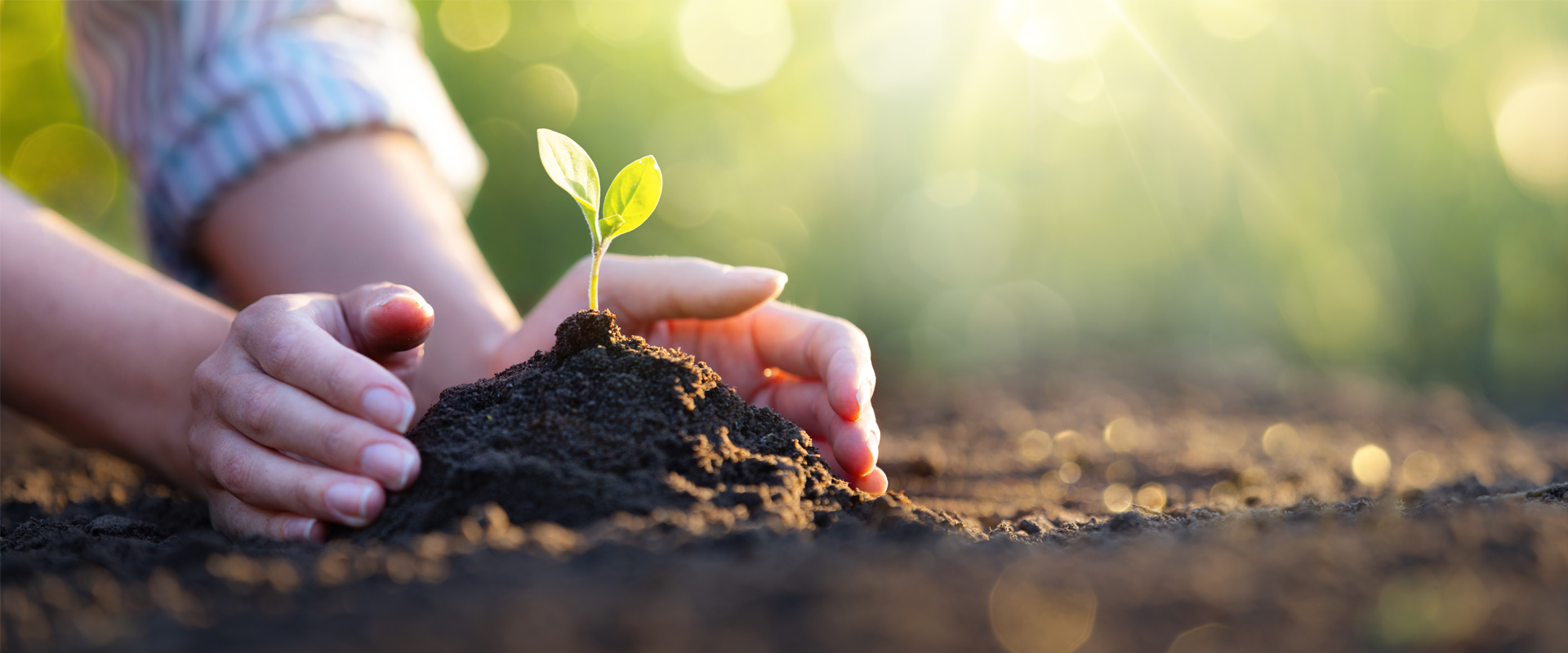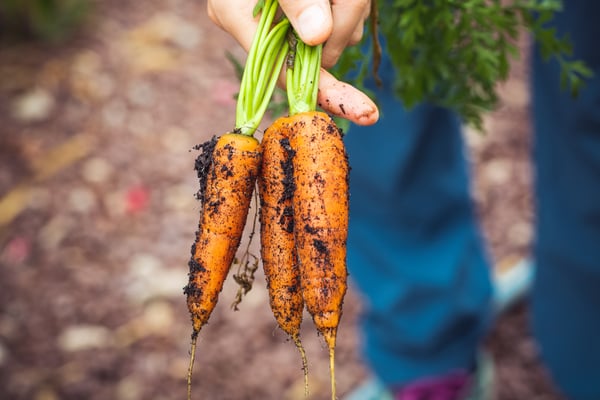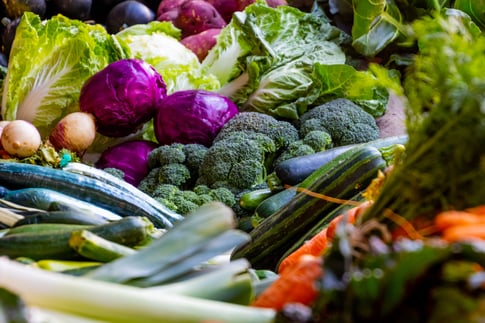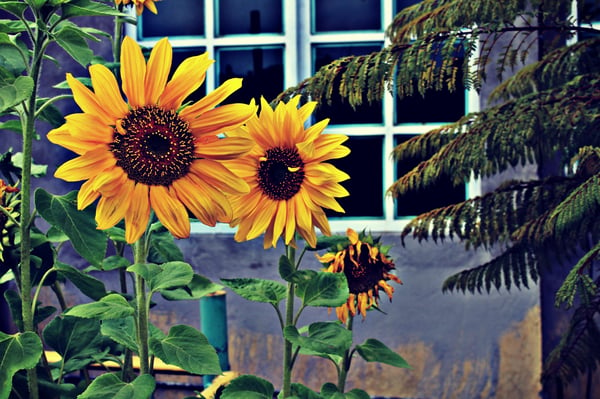 Are Your Plants Hungry?
Are Your Plants Hungry?
There is something innately satisfying about coaxing plants from seed or tender seedling to full grown flora. Maybe it’s the sight of a bright red tomato, award winning dahlias, or the smell of soil. In order for plants to be hardy enough to reach their full potential they need proper nutrients. One would think that weeding, rototilling, and then laying down a layer of fertilizer would be enough.
We recommend testing your soil regularly in order to directly monitor plant health. Testing your soil allows everyone from home gardeners to seasoned farmers to obtain their dream vegetation. Now you may be wondering, how much does that cost? Or great, how many tests do I need to do? The answers may surprise you.
Testing your soil can actually save you time, money, and heartache in the long run when managing your plants. Just starting out with soil testing? There is no need to go nuts testing everything. The top two soil measurements for a healthy garden are pH and electrical conductivity (EC).
Why You Should Start Testing pH and EC
pH and electrical conductivity work hand-in-hand to ensure your plants’ health. Every plant has their favorite soil pH for growth. The preferential pH isn’t your plants being picky. Different plants need different levels of nutrients, and the pH of soil determines which, and how much, nutrients are available to the plants. pH can also affect the root growth, and microbial activity in the soil. Measuring the pH will enable you to make smaller and faster pH adjustments so your plants don’t suffer.
While pH tells you if nutrients are available to your plants, EC helps you to track the amount of nutrients available to plants. EC can also give you an idea of the dissolved salts in the soil. Some plants are more sensitive to salts than others, so this is good to keep in mind.
Note: Electrical conductivity measurements can tell you the amount of nutrients in the soil, but it cannot tell you WHAT nutrients are available.
Interpreting pH Results

Daffodils prefer soil between 5 - 8.5 pH.
Many garden plants prefer soil between pH 5.5 and 8.0. Lower pH soil causes aluminum to become soluble, and aluminum is not favorable for plants. As a dissolved metal it can restrict root growth. Fewer, or less branching roots translates to a restriction on a plant’s water and nutrient uptake; thus, stunting growth. Not only does a lower soil pH restrict plants, all of the major nutrients that plants need to flourish (nitrogen, phosphorus, sulfur, calcium, magnesium, potassium) become bound and unavailable.
Remember that different plants require different pH levels? Well even your lawn has a favorite pH range! Typical lawn grass prefers its soil between 6.0 and 7.5 pH. After taking a pH measurement of your soil (we recommend the HI12922 HALO® Wireless Soil pH Meter), it's time to decode whether or not that pH is relevant to your plants.
| Garden Plants and Flowers | |||
| Plants | Preferred pH Range | Plants | Preferred pH Range |
| Acacia | 6.0 - 8.0 | Ligustrum | 5.0 - 7/5 |
| Acanthus | 6.0 - 8.0 | Magnolia | 5.0 - 6.0 |
| Amaranth | 6.0 - 6.5 | Narcissus | 6.0 - 8.5 |
| Bougainvillea | 5.5 - 7.5 | Oleander | 6.0 - 7.5 |
| Dahlia | 6.0 - 7.5 | Paulownia | 6.0 - 8.0 |
| Erica | 4.5 - 6.0 | Portulaca | 5.5 - 7.5 |
| Euphorbia | 6.0 - 7.0 | Primula | 6.0 - 7.5 |
| Fuschia | 5.5 - 7.5 | Rhododendron | 4.5 - 6.0 |
| Gentian | 5.0 - 7.5 | Roses | 5.5 - 7.0 |
| Gladiolus | 6.0 - 7.0 | Sedum | 6.0 - 7.5 |
| Hellebore | 6.0 - 7.5 | Sunflower | 5.0 - 7.0 |
| Hyacinth | 6.5 - 7.5 | Tulip | 6.0 - 7.0 |
| Iris | 5.0 - 6.5 | Viola | 5.5 - 6.5 |
| Juniper | 5.0 - 6.5 | ||
| Vegetables and Herbaceous Flora | |||
| Plants | Preferred pH Range | Plants | Preferred pH Range |
| Artichoke | 6.5 - 7.5 | Pepper | 6.0 - 7.0 |
| Asparagus | 6.0 - 8.0 | Early Potato | 4.5 - 6.0 |
| Barley | 6.0 - 7.0 | Late Potato | 4.5 - 6.0 |
| Bean | 6.0 - 7.5 | Sweet Potato | 5.5 - 6.0 |
| Brussels Sprout | 6.0 - 7.5 | Pumpkin | 5.5 - 7.5 |
| Early Carrot | 5.5 - 7.0 | Rice | 5.0 - 6.5 |
| Late Carrot | 5.5 - 7.0 | Soybean | 5.5 - 6.5 |
| Cucumber | 5.5 - 7.5 | Spinach | 6.0 - 7.5 |
| Eggplant | 5.5 - 7.0 | Strawberry | 5 - 7.5 |
| Lettuce | 6.0 - 7.0 | String Bean | 6.0 - 7.5 |
| Maize | 6.0 - 7.5 | Sugar Beet | 6.0 - 7.0 |
| Melon | 5.5 - 6.5 | Sunflower | 6.0 - 7.5 |
| Oat | 6.0 - 7.0 | Tomato | 5.5 - 6.5 |
| Onion | 6.0 - 7.0 | Watermelon | 5.5 - 6.5 |
| Pea | 6.0 - 7.5 | Wheat | 6.0 - 7.0 |
Interpreting EC Results

Electrical conductivity measurements tend to have a bit more wiggle-room for many plants. For example, carrots have a minimum need of 1.0 mS/cm, an EC of 2.8 mS/cm is a happy medium, with a maximum of 8 mS/cm. Do a little research to see what the optimal EC is for the different plants you want to plant in your garden. Having plants near each other that need similar EC requirements could help you to create healthy zones to promote high crop yields.
One would think the more fertilizers and nutrients the better, but even plants can have too much of a good thing. Remember how salinity was mentioned above? Too much, can inhibit the extraction of water from the soil. When this happens, nutrient imbalances occur and can actually cause toxicity to the plants. When measuring your EC, we recommend the HI98331 Soil Test Direct Soil Conductivity Tester for home garden use. Take a look below for some common plants and their electrical conductivity tolerances.
| Orchard | |||
| Plants | Max EC0 (mS/cm) | Mid EC75 (mS/cm) | Min EC100 (mS/cm) |
| Grapevine | 12 | 4.1 | 1.5 |
| Orange & Lemon | 8 | 3.3 | 1.7 |
| Apple & Pear | 8 | 3.3 | 1.7 |
| Walnut | 8 | 3.3 | 1.7 |
| Plum | 7 | 2.9 | 1.5 |
| Peach | 6.5 | 2.9 | 1.7 |
| Apricot | 6 | 2.6 | 1.6 |
| Vegetables and Herbaceous Flora | |||
| Plants | Max EC0 (mS/cm) | Mid EC75 (mS/cm) | Min EC100 (mS/cm) |
| Melon | 16 | 5.7 | 2.2 |
| Spinach | 15 | 5.3 | 2.0 |
| Cauliflower | 13.5 | 5.5 | 2.8 |
| Tomato | 12.5 | 5.0 | 2.5 |
| Watermelon | 10 | 4.4 | 2.5 |
| Potato | 10 | 3.8 | 1.7 |
| Lettuce | 9 | 3.2 | 1.3 |
| Pepper | 8.5 | 3.3 | 1.5 |
| Carrot | 8 | 2.8 | 1.0 |
| Onion | 7.5 | 2.8 | 1.2 |
| Strawberry | 4 | 1.8 | 1.0 |
| Oat | 28 | 13 | 8 |
| Cotton | 27 | 13 | 7.7 |
| Sugar Beet | 24 | 11 | 7 |
| Soybean | 10 | 6.2 | 5 |
| Maize | 10 | 3.8 | 1.7 |
| Bean | 6.5 | 2.3 | 1.0 |
What If Your Readings Are Off?

All is not lost if your soil readings aren't where they need to be. If your soil is too acidic (the pH values are too low), apply some lime (calcium carbonate, CaCO3) or ground up eggshells. Soil that is too basic (the pH values are too high), try applying gypsum (calcium sulfate, CaSO4) or peat moss. You can also try irrigating the soil more frequently to aid in lowering the pH.
When the electrical conductivity of your soil is too low, you most likely need to apply more fertilizer. Watch the weather forecast before applying fertilizer. A heavy rain could wash away the plant food and you will end up having to reapply. If your EC readings are too high, check your irrigation water for dissolved salts (does the water you use have a higher EC reading?). Irrigation water higher in dissolved salts can deposit too many salts in the soil. To correct high salt levels, double check how your garden is draining. If the garden isn't draining well you may need to set up better drainage. High salt levels (and high EC) can also be indicative that your soil is too dry. Feel the soil and see if it needs more moisture.
Always bear in mind that the cost of materials, and your actual planted area can greatly affect how you treat your garden soil. When purchasing pre-mixed treatments follow the directions from the manufacturer when applying the treatment. When in doubt, make small incremental changes and test the soil often. Many treatments are best applied in the fall to allow the adjustments to settle over the winter. This will also set you up for easier garden prep.
Got Questions?
For more information regarding how Hanna Instruments can help you with measuring your garden, contact us, as sales@hannainst.com or 1-800-426-6287.







